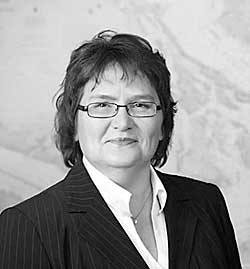By Auditor, F. Milene Henley
I breathe a big sigh of relief at the end of each fiscal year.
The struggles to meet last year’s budget are over; the wrangling over next year’s budget has been (largely) resolved; and the new year seems full of promise. It’s a good time to step back and take stock of how we’re doing.
2011 ended on a good note. We collected just over our targeted sales tax revenue, and came within half a percent of achieving total general fund revenue projections for the year. On the expenditure side, we ended the year about 1.5 percent below budgeted general fund expenditures.
Thinking beyond the current year, I would also say that the general fiscal health of San Juan County is pretty good. To the County Council’s credit, we have responded quickly and on an ongoing basis to changing economic conditions. The result has been both staff and service reductions in each of the last three years, but those reductions have kept us on an even keel.
The voters also did their part by approving the 2009 levy lid lift which saved several valued, but non-mandated, programs. The unions have also contributed, by accepting furloughs, years with no COLAs (cost-of-living-adjustment), and a significant change in the county’s medical benefits.
The other crucial element in the county’s current financial success is its reserve policy. A government’s fiscal health is measured largely by its bank account.
Ending cash balance in the county’s general fund dropped sharply after its high point in 2007. September 2009 cash was so low we deferred paying part of our liability insurance until the next month in order to avoid running out of cash. County-wide cash looks even worse. Five funds ended 2009 in the red, which resulted in an audit finding for that year.
Although general fund cash is recovering, county-wide cash continues to fall. A large part of the drop has been in the Land Bank, as real estate transactions, and the resulting Land Bank tax, have dried up. In 2008, the Land Bank held almost 60 percent of the county’s cash; today it has barely one-third.
Spurred by falling cash, the council adopted in 2009 a reserve policy that addressed operating cash, rainy day funds, and capital reserves. As a result, San Juan County’s cash position is in relatively good shape.
Many counties have so little cash that they routinely borrow money to cover uneven revenue and expenditure flows. Grays Harbor County—which may be only the first of many—for 2010 received an audit finding for a declining “financial position”. The audit report cited declining tax revenues, decreasing cash, and expenditures exceeding revenues. The county’s response included a goal “to replenish cash reserves”—a step San Juan County has already taken.
Unfortunately, reserves are a tempting target. Some would use cash reserves to fund operating expenses, and would modify the policy to make it harder to reserve rainy day funds. Although the county is in relatively good shape now, it still faces an uncertain future as expenditures continue to outpace revenues.
The council is focusing this year on trying to achieve a truly sustainable budget. That effort, plus a firm resolve to continue reserving, will keep San Juan County at the forefront of fiscal health among Washington counties.
— Editor’s note: Auditor Milene Henley’s quarterly finanical reports are published regularly by the Journal.



